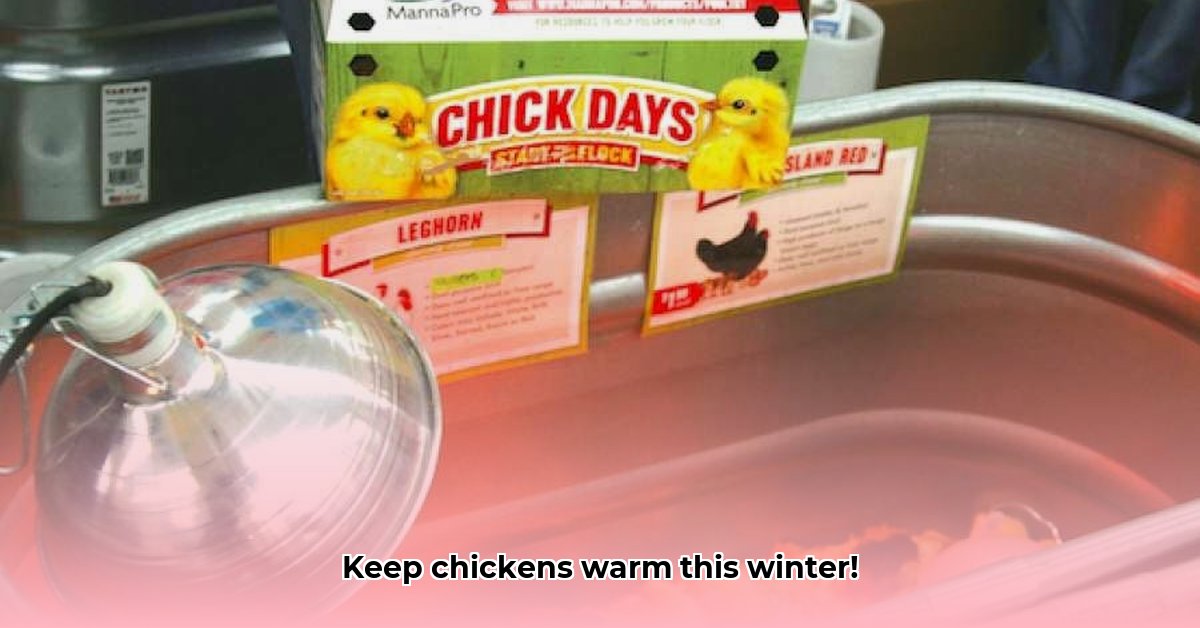
Choosing the Right Heat Lamp for Your Flock
Winter's harsh temperatures pose a significant threat to your chickens' health. While heat lamps from Tractor Supply offer a convenient solution for supplemental warmth, selecting and using them effectively requires careful consideration. This guide walks you through choosing the right lamp, ensuring safe installation, and implementing energy-saving strategies. Ignoring these steps can lead to increased electricity bills and potential safety hazards. Did you know that improperly installed heat lamps account for a substantial number of chicken coop fires each year? For more information on Tractor Supply heat lamps, check out this helpful resource.
Wattage, Size, and Type: Finding the Perfect Fit
Tractor Supply offers a variety of heat lamps with different wattages. Higher wattage lamps produce more heat but consume more electricity. The ideal wattage depends on your coop's size and the ambient temperature. A larger coop in a colder region requires a higher-wattage lamp than a smaller coop in a milder climate. Remember to always check the lamp's packaging for the recommended coop size.
Infrared heat lamps are often preferred for their efficiency. They primarily emit heat, minimizing wasted energy on visible light. However, even these energy-efficient options still consume energy. So, how can you minimize your energy usage and reduce costs? That's where our following steps come in.
Step-by-Step Guide to Safe Heat Lamp Installation
Safety is paramount when using electricity and heat sources near your chickens. Here's a step-by-step guide to a safe and effective installation:
Secure Mounting: Hang the lamp securely using a sturdy chain or hook designed for high-heat applications. Ensure the lamp is out of your chickens' reach to prevent burns or accidental damage. A poorly mounted lamp poses a significant fire risk.
Optimal Distance: The distance from the lamp to your chickens depends on the lamp's wattage. Start further away than you think necessary, gradually lowering the lamp while monitoring the temperature with a reliable thermometer. Aim for a comfortable temperature, minimizing the risk of overheating or chilling. The ideal range is usually between 85°F and 90°F.
Fire Prevention: Keep flammable materials (bedding, wood shavings) far away from the lamp. Never leave the lamp running unsupervised. Regularly inspect the bulb and wiring for any signs of damage. Replacing worn-out wiring is critical for fire safety.
Temperature Monitoring: Use a reliable thermometer to monitor the coop's temperature. Maintaining the correct temperature is vital for your chickens' health and well-being. Overheating can be just as detrimental as underheating.
Sustainable Practices and Energy-Saving Solutions
While heat lamps provide immediate warmth, their long-term energy consumption can be significant. Adopting sustainable practices can significantly reduce your electricity bill and minimize your environmental impact.
Energy-Efficiency and Beyond
Energy-Efficient Bulbs: Choose bulbs with a high lumens-per-watt rating for maximizing heat output per unit of energy. This translates directly to cost savings.
Coop Insulation: Proper insulation is crucial for reducing heat loss. Insulation minimizes the need for supplemental heating. Would you rather heat the coop or the outside world?
Thermal Mass: Utilize materials like straw bales, which absorb heat during the day and release it slowly at night, offering natural temperature regulation.
Alternative Heating: Explore alternative heating solutions, such as electric brooders (with careful safety measures) that may be more efficient for smaller spaces.
Dr. Emily Carter, Poultry Science Professor at Cornell University, advises, "While heat lamps offer a quick solution, remember that they are not the most energy-efficient or environmentally friendly option. Prioritizing coop insulation and exploring alternative heating methods should be considered for long-term sustainability."
Minimizing Electricity Costs: Practical Strategies
Reducing your electricity bills doesn't require a complete overhaul of your chicken-keeping practices. Here are some practical steps you can take:
Strategic Lamp Placement: Position lamps to provide even warmth throughout the coop, avoiding hot spots that waste energy.
Reflective Surfaces: Use reflective materials behind the lamp to bounce heat back into the coop, increasing efficiency.
Thermal Mass Integration: Incorporate materials such as rocks or bricks to absorb and release heat throughout the night.
Timers and Thermostats: Install a timer or thermostat to control the lamp’s operation, ensuring optimal temperature maintenance without unnecessary energy consumption.
Regular Maintenance: Cleaning the lamp and inspecting wiring for damage prevents energy loss and ensures fire safety.
By combining these strategies, you can create a warm and safe environment for your chickens while significantly minimizing your electricity costs and environmental footprint. Remember, a well-insulated coop, combined with smart lamp usage and energy-efficient bulbs, significantly reduces your reliance on supplemental heating.